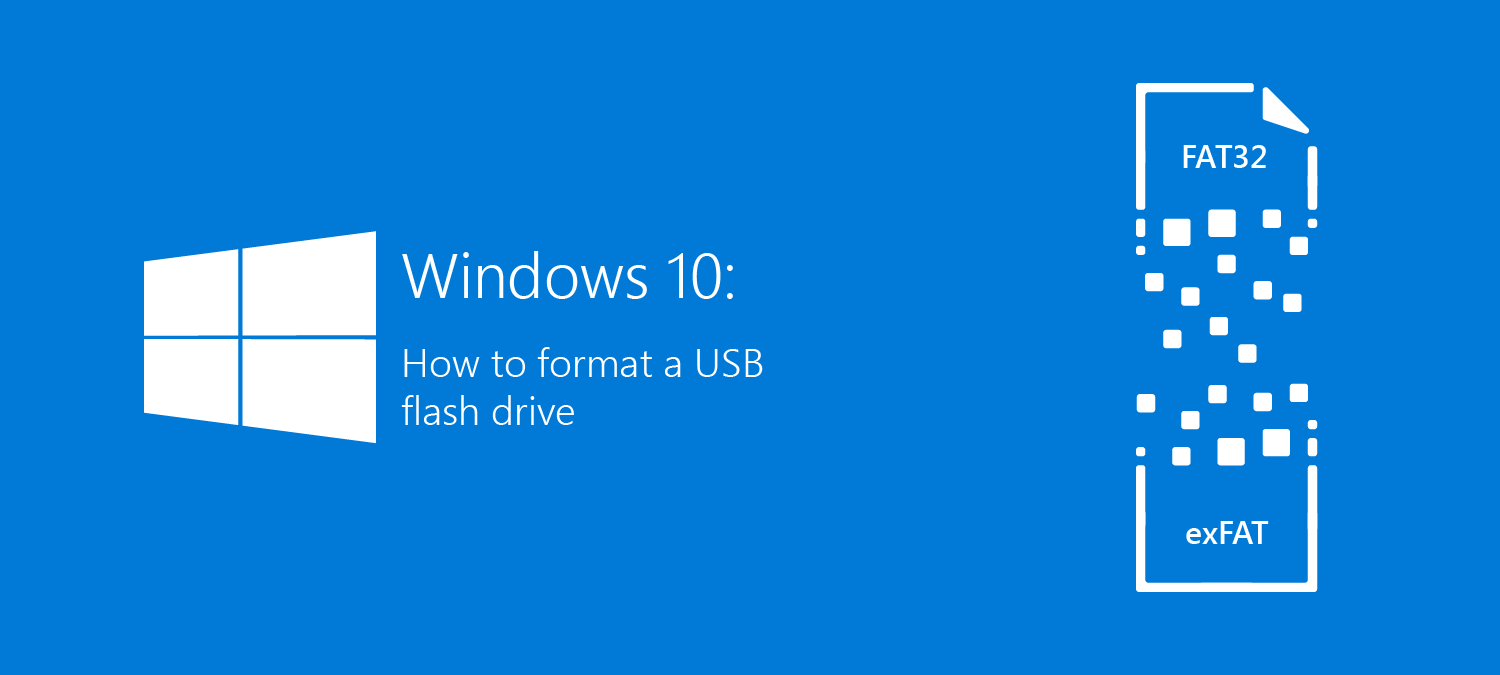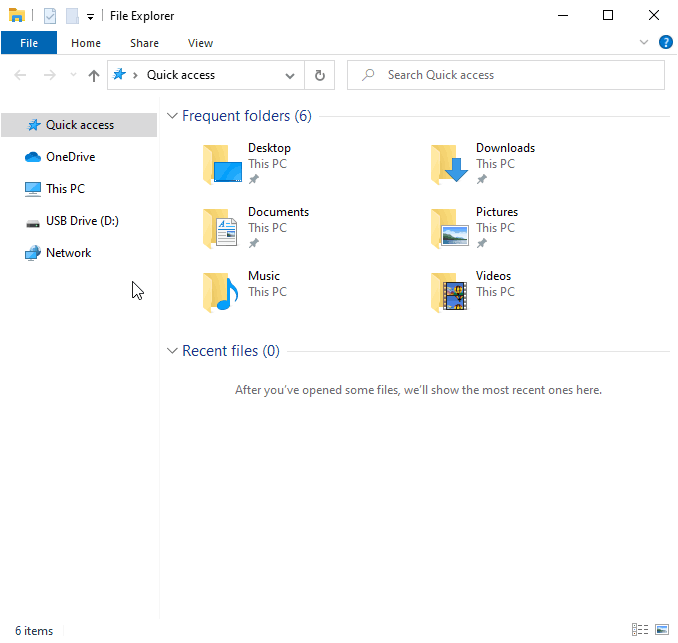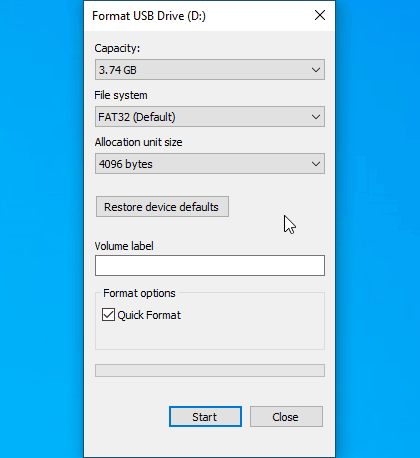
How to format a USB flash drive on Windows 10
Windows, in general, is an extremely user friendly operating system. The same thing is true when it comes to formatting a flash drive on Windows or any removable media like an external hard drive. While this guide is specifically for Windows 10, it will work for all versions of Windows from XP and up.
We are going to be formatting our USB flash drive using the exFAT file system, however, this guide will work for any file system you choose. We recommend exFAT because of its ability to work on almost any system including Apple OS X, Linux, and obviously Windows. It also does not have a 4GB max file size like some other file systems do.
Warning: Formatting anything will erase all the data contained on that drive. So before doing so, back up your import files!
Quick breakdown of the steps
Here is a brief summary of the steps necessary to format a flash drive on Windows 10, or any other windows version back to Windows XP.
- Insert your USB flash drive into your computer (obviously).
- Open File Explorer.
- In the left pane right click the name of your USB drive.
- From the menu, click Format.
- In the File System drop down, select the
exFAT. - Click start to format the drive.
Step 1: Open File Explorer
Open File Explorer either by clicking on the file folder icon on your taskbar or with the keyboard shortcut combination Win + E. Once open, locate your USB flash drive, or external hard drive, you would like to format, in our case it is drive D:
Step 2: Right click your drive and select format
Once you have File Explorer opened you will see on the right hand side a list of devices and locations. Your flash drive should be among those. Right click your USB flash drive and select format from the resulting dialog box.
You might want to unplug other flash drives and removable media to avoid confusion. Notice we have only one USB flash drive plugged in.

Step 3: Choose the appropriate file system and start the format
The format dialog box has a few options in it. The most important of these is the File System option. Most of the time when formatting external media like USB flash drives and external hard drives the goal is to move to a more modern file system in order to store files larger than 4GB which is a problem with FAT32.
We recommend going with exFAT as the file system since it doesn't have a 4GB file limitation like FAT32 does, but it will also work on Apple computers, Linux computers, and of course Windows. You can however choose whatever file system you would like.
Select the file system you desire and click start. You will be presented with a warning explaining that the files on your USB flash drive will be erased click okay, only if you've backed up your files, and that is it. Your drive is refreshed.

That is all there is to it. This is one of the more simplistic tasks on Windows that most people are afraid of tackling. Just remember when you are formatting things you will erase all the data on that storage device, so be careful.